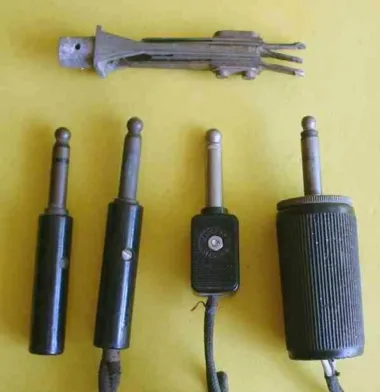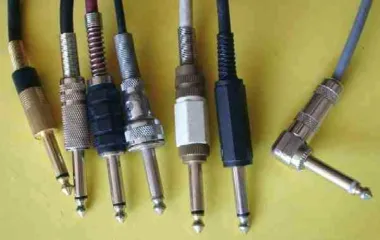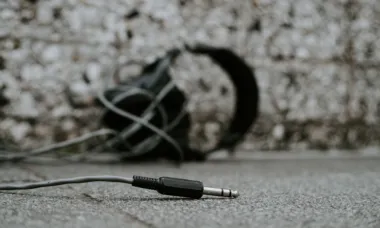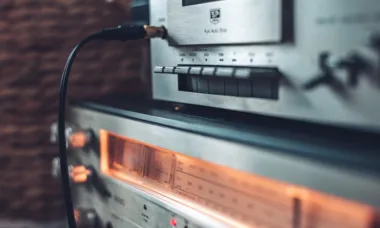
The choice between mono or stereo sound isn't just about technicalities—it's a decision that can influence your entire listening experience. From the warmth of vinyl records to the digital precision of the latest high-res audio files, the choice between mono and stereo can be a pivotal decision. We'll delve into when and why one may be preferable over the other, from audio files to recording and playback.
The History of Mono and Stereo Sound
The History of Mono Sound
Monaural sound, commonly referred to as mono, dominated the audio recording landscape until the mid-20th century. Initially used in phonograph cylinders and gramophone records before 1958, mono was also prevalent in AM broadcasting and some FM radio stations focused on talk content. The technology had its share of devoted followers, including notable directors like Stanley Kubrick and Woody Allen, who preferred their films' soundtracks in mono.
Even music legends like The Beatles initially released albums in mono, and these mono versions have become collector's items. While mono LP records were phased out by the early 1970s, the format still holds nostalgic value. In 2009, The Beatles re-released a box set solely containing their mono output, indicating the enduring legacy of mono sound in the modern audio landscape.
The History of Stereo Sound
The concept of stereophonic sound dates back to 1881 when Clément Ader showcased a two-channel audio system at the Paris Electrical Exhibition. Known for its "auditive perspective," stereo sound offered a sense of relief and localization not possible with mono. This technology was commercialized as the Théâtrophone in France and Electrophone in England, available in public spaces and by subscription.

Over the years, stereo has become the standard for most modern audio applications, offering a more immersive experience. However, in some instances, engineers have managed to create stereo recordings from two separate masters dating back to a time before intentional stereo technology existed, underlining its retroactive reach.
These historical contexts are not just footnotes but integral to understanding the development and application of mono and stereo sound today.


Mono vs Stereo: What's the Difference?
Mono, short for monaural, sound relies on just one channel to convey audio signals. Whether you're using a single speaker or multiple ones, the same audio signal feeds each of them. The result? It sounds as if the audio is originating from a single point, regardless of how many speakers are in play.
Stereo, or stereophonic sound, on the other hand, utilizes multiple channels—usually two—to deliver audio. That means each speaker can get a unique signal. Take the legendary tune "Bohemian Rhapsody" as an example. The song plays different instruments and vocals through each speaker, fully exploiting the capabilities of stereo sound.
In today's digital era, stereo is often the go-to for devices and applications, overshadowing the once popular mono setup, especially used in older radio broadcasts. Stereo lends itself well to creating a sense of space or 'surround sound,' a feature prevalent in modern audio equipment.
Mono or Stereo for Audio Files
Mono audio files inherently carry a singular channel of sound, suitable for playback through a single speaker or multiple speakers playing the same signal. This contrasts with stereo files, which possess two distinct channels for left and right, often differing in sound to create a more spatial audio environment. When viewed in a DAW, mono files present a single waveform, while stereo files feature dual waveforms—one for each channel.
File Formats
In the realm of digital storage, mono files usually consume less space compared to their stereo counterparts. File formats like FLAC, MP3, and WAV can exist in either mono or stereo versions. The choice between mono and stereo can also influence data rate and file size.
Compatibility
Mono files offer higher compatibility across various playback systems. Whether played on high-end stereo systems or basic single-speaker devices, the sound remains consistent. Stereo files, however, lose their spatial depth when played on mono systems.
Mono or Stereo for Playback
Stereo playback systems offer a sense of space, allowing listeners to perceive sound from multiple directions—known as a stereo image. They play separate audio channels through two distinct speakers (left and right), effectively creating an aural "landscape" that can be shallow or deep, narrow or wide, depending on the audio engineering involved.
Audio Source
The quality of stereo playback is also heavily dependent on the audio source. Professionally recorded or mixed audio will often make better use of stereo capabilities than simpler, monophonic recordings.
Mono Systems
Mono playback, however, is devoid of this spatiality. A mono system will relay the same sound through all its speakers, offering no room for directional perception. This is commonly seen in older systems, public address systems, and specific applications where spatial information is unnecessary or even distracting.
Mono or Stereo for Recording
Stereo recording captures two distinct channels, allowing for a richer, more dynamic soundscape that can simulate the experience of live listening. This technique is often employed to record orchestras, natural environments, and complex sound setups where spatial location of various sound sources adds value to the audio.
Microphone Placement
Various stereo mic'ing techniques exist, each offering a different stereo image. Common methods include X-Y, A-B, and Mid-Side, which differ in microphone placement and orientation.
Mono Compatibility
While stereo recordings offer richness, they may suffer from phase issues, affecting how they translate to mono systems. Mono recordings are free from such issues but lack the spatial characteristics that can add depth to certain types of audio, like musical performances or ambient environments.
Intended Usag
The decision between mono and stereo recording can also hinge on its intended usage. For applications like podcasts where the focus is primarily on spoken word and intelligibility, mono can suffice. However, for more complex productions like music albums or film scoring, stereo is generally preferred.
Phase Coherence
One critical aspect in stereo recording is maintaining phase coherence between the two channels. Inconsistencies can result in a collapsed or muddy stereo image. Advanced DAWs often provide tools for monitoring and correcting phase issues.

Which is Better, Mono or Stereo?
"Better" is subjective when it comes to choosing between mono and stereo sound; it boils down to your needs and the situation at hand. Stereo is the frontrunner when it comes to immersive experiences. Imagine watching a blockbuster movie with a captivating score and rich ambient sounds. Stereo allows you to soak it all in, delivering audio cues from multiple directions.
However, there are instances where mono has the upper hand. Let's say you're someone who enjoys music but only pops in a single earbud. In such a case, mono sound ensures you're not missing out on any element of the song. It consolidates all audio components into one channel, delivering the full experience through just one earbud.
So, when deciding between mono and stereo, consider what you're looking to achieve. Each has its merits and drawbacks, tailored for specific scenarios which we'll get into in the following sections like "Audio Files," "Playback," and "Recording."
When To Use Mono vs Stereo?
The choice between mono and stereo depends on your specific needs, the nature of your audio source, and the intended listening environment. Mono is straightforward and less complex, making it a reliable choice for certain scenarios. On the other hand, stereo offers depth and dimension but can be more complicated to set up. Below we answer some key questions to help you navigate these choices more effectively.
Mono or Stereo: Frequently Asked Questions
Is my input source mono or stereo?
Determining the type of your input source is crucial. For microphones, the standard is mono, but there are stereo microphones explicitly designed to capture a broader sound field. These stereo mics often have dual diaphragms and are clearly labeled as such.
Electric instruments like guitars and basses are predominantly mono, offering only a single output jack. When it comes to electronic keyboards, synthesizers, and electric pianos, you'll often find them equipped with stereo outputs labeled 'Left' and 'Right.' However, some older or simpler models might be mono and will usually have just one output jack.
Should my DAW track be mono or stereo?
If you're working in a Digital Audio Workstation (DAW) like Pro Tools, Ableton, or Logic, the type of track you should create depends on your input source. For stereo sources, you'll need to set up a stereo track to maintain the stereo image correctly. Keep in mind that stereo tracks hard-pan the left and right channels, locking in the spatial distribution of the sound.
You're not strictly limited to recording a mono source on a mono track. Some professionals record mono sources onto stereo tracks for specific creative effects. This could be useful if you're miking an acoustic instrument from two angles to create a broader sound image, or if you plan to pan two mono instruments hard left and hard right in post-production.
If my input is mono, should my output be mono too?
In most DAWs, you'll find that choosing a mono output isn't typically an option. This is because general audio playback systems are configured for stereo. Even if you've only recorded a mono source, exporting it as a stereo file is often recommended. Your mono track will play back in the center of the stereo field unless you decide to pan it left or right during mixing. This is standard practice, so there's no need to worry. Your DAW will usually default to stereo output channels (often labeled Output 1-2) for playback.
By providing a stereo output, you give yourself flexibility for future adjustments, like panning or applying stereo effects. Even if your track is dead-center in the stereo image, exporting it as a stereo file ensures that it will play back correctly on a wide range of audio systems.
Does mono or stereo sound louder?
The question of whether mono or stereo sounds louder is a common one, but the answer isn't as straightforward as you might think. Loudness is influenced by several variables, such as the specific audio content, speaker setup, and listening environment.
In a calibrated setup, there should be no significant difference in loudness between mono and stereo when played at the same volume level. However, stereo often appears to sound louder due to its spatial qualities. With two distinct channels feeding audio to left and right speakers, stereo produces a more immersive sound experience that can be perceived as louder.
On the flip side, mono might sound louder in compromised listening situations. For example, if you're using a single earbud or listening through a basic speaker, mono audio tends to come across as more focused and thus, may appear louder.
Should you record dialogue in mono or stereo?
In the context of dialogue, the decision between mono and stereo hinges on the nuances of your project. Mono is often the default for most spoken-word applications due to its ease of use and broad system compatibility. It centralizes the voice, making it straightforward for the listener, which is especially beneficial for content like podcasts or audiobooks.
Stereo dialogue recording, while less common, has its place in cinematic or multi-dimensional audio experiences. Think of an audio drama where the spatial positioning of characters enriches the storytelling. However, capturing dialogue in stereo demands a more intricate setup and increased vigilance in post-production to avoid potential phase issues.
In a nutshell, opt for mono for clarity and compatibility, and reserve stereo for specialized projects where the spatial aspect of the dialogue enhances the overall experience.

Mono or Stereo: Final Thoughts
The landscape of audio is vast and continually evolving, yet the mono vs. stereo debate remains a cornerstone in shaping our auditory experiences. Whether you're an audiophile seeking the purest sound or a casual listener popping in an earbud on your commute, understanding these differences can enrich your auditory world. So, the next time you're about to press play, pause for a moment and consider—what's your sound dimension today?







Leave a Reply!